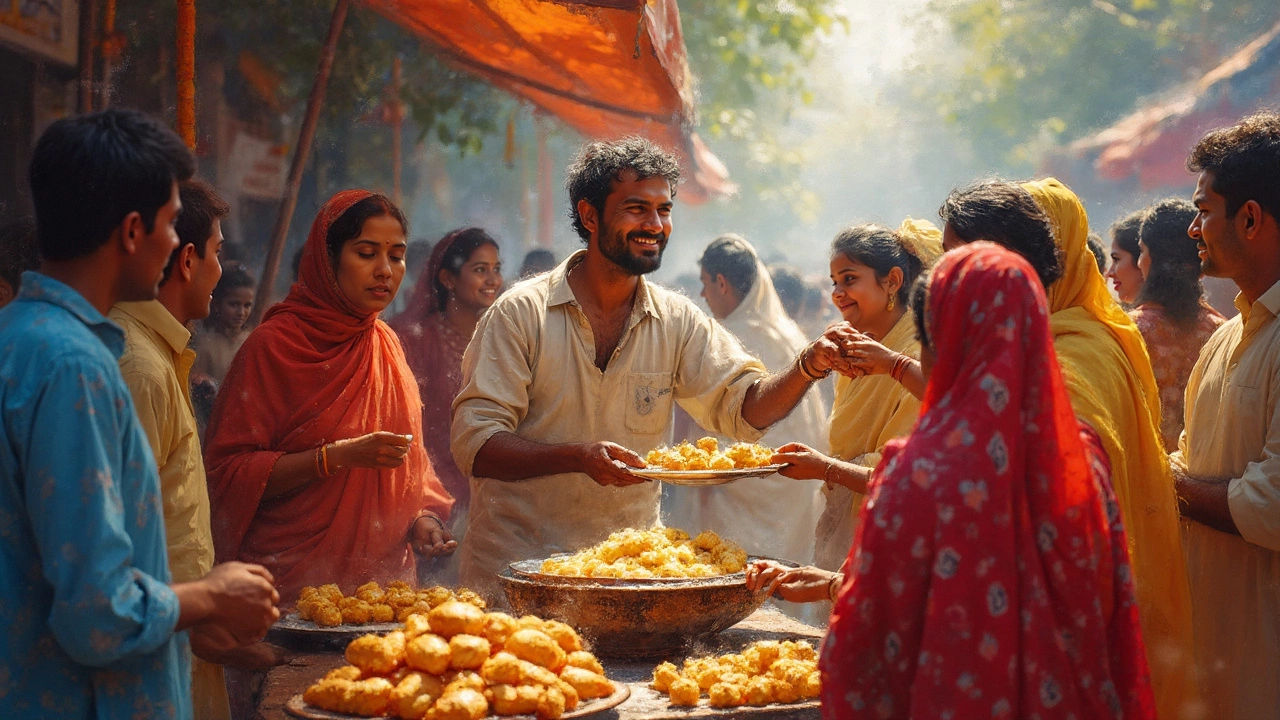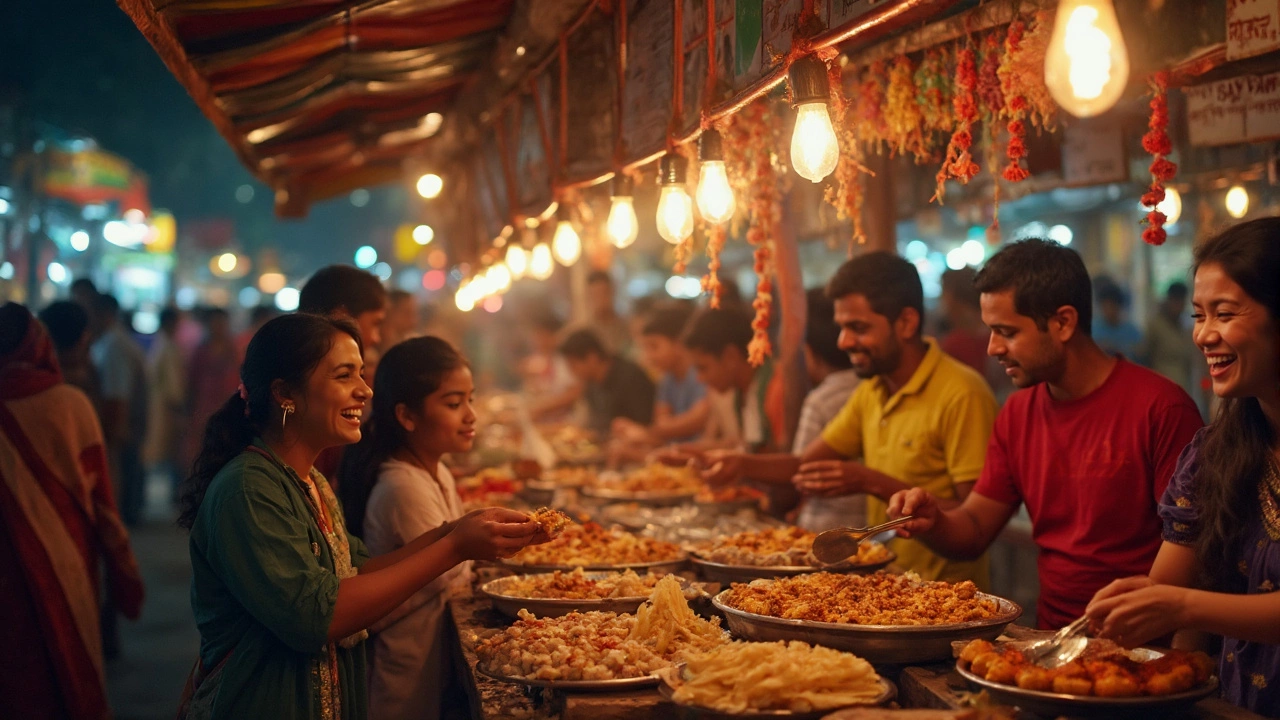Diving into India's street food scene is like entering a vibrant world of flavors and aromas that can tantalize all your senses. But hey, no one wants their journey to end with an upset stomach. So, let's get practical about keeping your tummy happy while you indulge.
First, focus on fresh and hot food. Why? Because heat kills most of the bacteria you might want to avoid. Stick to vendors who cook right in front of you—that sizzling pan is your best friend. Also, observe the hygiene of the vendors. It's simple: cleaner surroundings often indicate cleaner food.
- Understanding the Street Food Scene
- Safe Eating Practices
- Hydration Basics
- Recognizing Safe Food Spots
Understanding the Street Food Scene
India's bustling streets are lined with street food vendors offering a dizzying array of flavors. Whether you're in Delhi with its famous spicy chaats, or Mumbai savoring a vada pav, there's always something to tickle your taste buds.
The key to enjoying this food paradise is knowing what to expect. Many stalls specialize in one dish perfected over generations, often keeping recipes secret for distinct flavors. The food is typically prepared in small batches to ensure freshness, a crucial factor in maintaining flavor and preventing contamination.
Regional Delights
Different regions offer their own specialties. For instance, Kolkata is known for its kathi rolls, while the streets of Chennai dish out piping hot idlis and dosas. These localized delicacies mean you’re not just enjoying a meal; you're diving into history and tradition with every bite.
Timing Matters
When to eat is also crucial. Some stalls operate only at certain times, like early morning or after sunset, to catch those craving breakfast, lunch, or dinner. Eating when stalls are busy can sometimes be a good sign—they're serving fresh portions quickly!
Next time you're wandering through a food market, remember that understanding the dynamics of the scene is half the fun and all the wisdom.
Safe Eating Practices
Eating street food in India can be a grand adventure, but staying smart can make all the difference in keeping your stomach safe. Here’s how you can savor those street food delights without a hitch.
Pick Vendors Wisely
Don't just go for the first vendor you see. Look for stalls where locals are crowding, as this usually means the food is fresh and trustworthy. Vendors with more customers often have quicker ingredient turnover, reducing the chance of food spoilage.
Hand Hygiene
Always clean your hands before diving into that piping hot samosa. Carry hand sanitizer or wet wipes, because, trust me, you don’t want pesky germs hitching a ride to your tummy.
Limit Raw Foods
Salads and cut fruits may seem healthy, but they might cause trouble if not washed properly. Stick to fruits you can peel, like bananas or oranges, which naturally protect themselves from dirt and handling.
Watch the Water
Here's a golden rule: avoid local tap water. This means steering clear of ice in drinks unless you’re certain it’s from bottled water. When in doubt, opt for sealed bottled water or packaged soft drinks to stay hydrated safely.
Observe Food Handling
- Watch how the vendor handles food. If they’re using the same hands for money and food, it’s a red flag.
- See if the utensils and plates look reasonably clean. Dirty utensils can quickly turn a good meal bad.
Check the Oil
Observe the oil being used. If it looks old and dirty, skip it. Fresh oil is crucial for both taste and health. Greasy and reused oil can be tough on your stomach.
| Item | Average Safe Consumption Time |
|---|---|
| Chaat | Within 30 mins of preparation |
| Pani Puri | Immediately after served |
| Bhajiya | While still hot |
Following these safe eating practices gives you the freedom to fully enjoy your Indian street food experience without worry. Bon Appétit!

Hydration Basics
Okay, so you're about to dive into some of the best street food on this planet. But wait, before you grab that pani puri, let’s talk about the good ol’ H2O. Staying hydrated is crucial when chomping around town, especially since some foods can be a bit spicy.
Water Choices: Bottled Is Best
Here's the deal: always go for bottled water. It might sound cliché, but trust me, this is a non-negotiable. Check the seal before you buy it. If the seal's broken, give it a pass. And while you're at it, keep an eye out for brands you recognize. If you're in doubt, ask the locals which bottled water is reliable.
Avoid Raw Water & Ice
I know that iced lassi looks tempting, but hold on. Ice cubes are often made from tap water, which might not be filtered. So, as much as you want to cool down, skip the ice. And for drinks that are freshly prepared, make sure they're made with bottled or boiled water.
Electrolyte Supplements
Fun fact: India can get toasty, and sweating buckets is part of the charm. But this means you're losing salt and minerals. An electrolyte supplement can save the day. They're easy to carry and can help replenish what you've lost.
Beverage Options to Consider
- Masala Chai: Go for it in places that boil their brew well.
- Coconut Water: Naturally sealed and refreshing, though seek ones being cut open in front of you.
- Hot Filter Coffee: Similar rules as the chai—it needs to be piping hot.
Staying hydrated not only keeps your energy up, but it also helps your body cope with any spicy surprises. Keep these basics in your back pocket, and you’ll be set for a fantastic street food adventure without hiccups!
Recognizing Safe Food Spots
Walking the bustling streets of India, one can't help but get drawn to the allure of street food stalls. But how do you know which ones won't leave you regretting your choices later?
1. Look for Busy Vendors
One solid rule of thumb: go where the crowd goes. Vendors with long lines often equate to fresh turnovers. Now, I know it can seem like you're just wasting time in line, but the logic is simple. The quicker the food sells, the fresher it is.
2. Check for Cleanliness
Take a quick look at how the vendor handles the food. Are they wearing gloves or using utensils instead of bare hands? Also, spot the layout of their cart—is it tidy, or are things spilling over the edges? A little attention to detail can save your trip from becoming a disaster.
"Safety in street food often comes down to turnover and cleanliness," says Chef Rohan Kapoor, a famous name in India's street food circuit.
3. Check Water Hygiene
India's street food often involves water, sometimes as an ingredient or for cleaning purposes. Make sure the vendor uses bottled or filtered water. This small factor can make a big difference in preventing that unwanted bad stomach issue. Hydration basics shouldn't be overlooked!
4. Local Recommendations Matter
Trust the locals—no one knows the area better. Ask them for their go-to street food places, since they'll likely lead you to the best and safest spots. Don't shy away from crowdsourcing real-time info from fellow travelers using apps or social media groups to discover rave-reviewed vendors.
These simple but effective measures could not only save your digestion but elevate your entire culinary journey through the streets of India.
